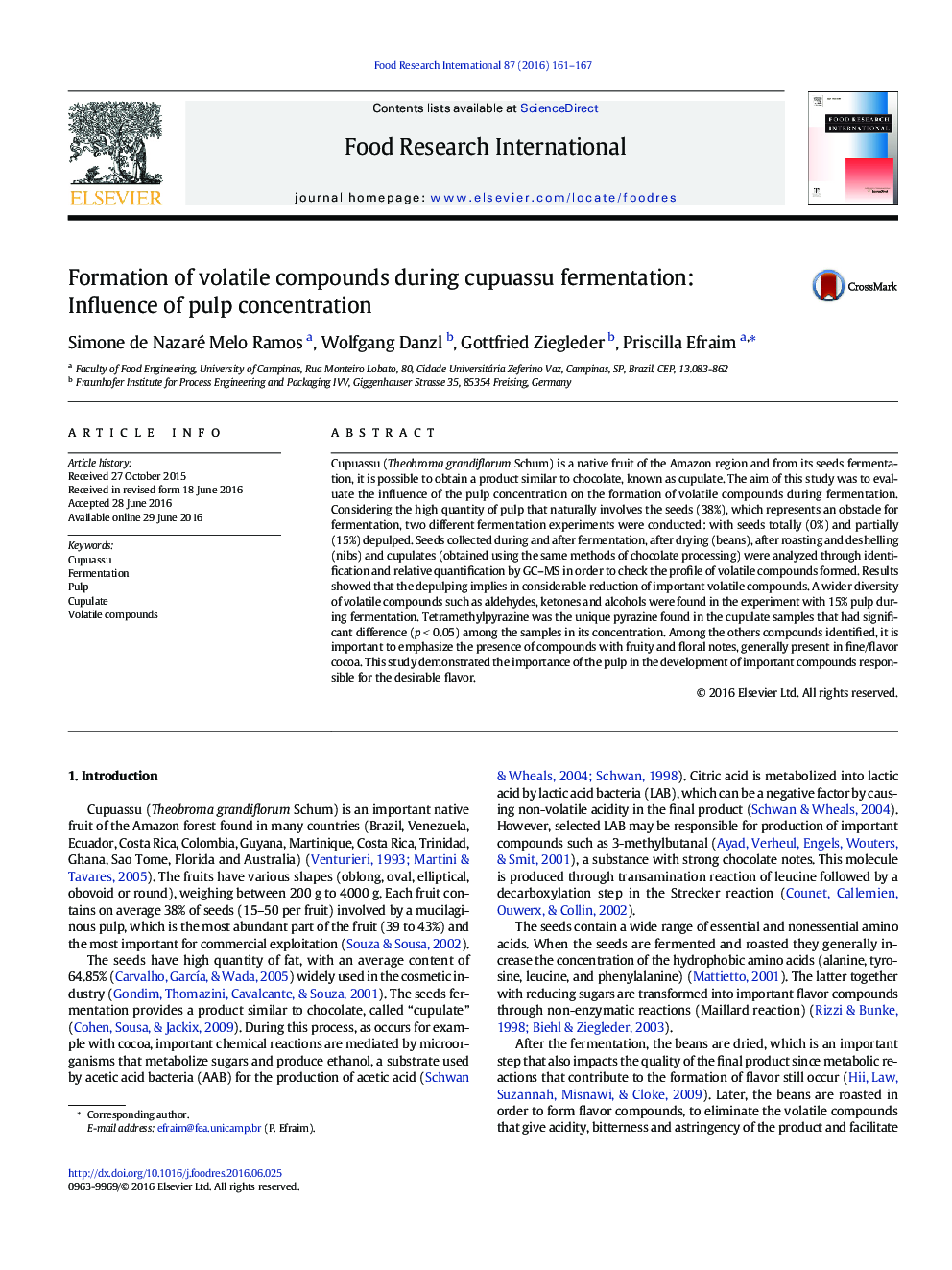| Article ID | Journal | Published Year | Pages | File Type |
|---|---|---|---|---|
| 4561212 | Food Research International | 2016 | 7 Pages |
•Establishing a pulp concentration in cupuassu for fermentation is proposed.•Volatiles compounds formed during fermentation and their concentration are identified.•Study confirms that some volatile compounds found in the beans and in the product come from pulp.•Greater amount of pulp and longer fermentation favor the formation of flavor compounds.
Cupuassu (Theobroma grandiflorum Schum) is a native fruit of the Amazon region and from its seeds fermentation, it is possible to obtain a product similar to chocolate, known as cupulate. The aim of this study was to evaluate the influence of the pulp concentration on the formation of volatile compounds during fermentation. Considering the high quantity of pulp that naturally involves the seeds (38%), which represents an obstacle for fermentation, two different fermentation experiments were conducted: with seeds totally (0%) and partially (15%) depulped. Seeds collected during and after fermentation, after drying (beans), after roasting and deshelling (nibs) and cupulates (obtained using the same methods of chocolate processing) were analyzed through identification and relative quantification by GC–MS in order to check the profile of volatile compounds formed. Results showed that the depulping implies in considerable reduction of important volatile compounds. A wider diversity of volatile compounds such as aldehydes, ketones and alcohols were found in the experiment with 15% pulp during fermentation. Tetramethylpyrazine was the unique pyrazine found in the cupulate samples that had significant difference (p < 0.05) among the samples in its concentration. Among the others compounds identified, it is important to emphasize the presence of compounds with fruity and floral notes, generally present in fine/flavor cocoa. This study demonstrated the importance of the pulp in the development of important compounds responsible for the desirable flavor.
Graphical abstractFigure optionsDownload full-size imageDownload as PowerPoint slide
